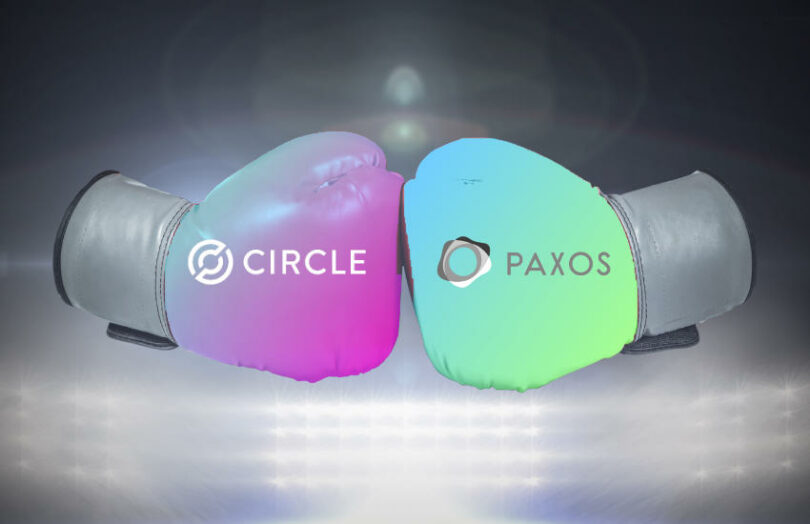Bloomberg reported that Circle, the issuer of the USDC stablecoin, filed a complaint to the regulator New York State Department of Financial Services (NYDFS) about the Binance USD (BUSD) coin not being fully backed. Yesterday it was announced that Paxos would stop issuing new BUSD at the instruction of NYDFS.
The Circle complaint probably did not relate to the Paxos-issued coin on Ethereum, but instead the Binance-issued pegged BUSD stablecoin on other chains.
The saga raises issues about the importance of stablecoin competition. Additionally, the SEC is targeting BUSD, saying Paxos issued a security. We explore why the SEC might perceive Paxos as less likely to fight.
The problem: the pegged BUSD stablecoin
It’s likely the Circle NYDFS complaint did not refer to the Ethereum stablecoin for which Paxos is responsible. Binance issued pegged stablecoins using the same BUSD branding on other blockchains, which were meant to be backed one-for-one by the Ethereum BUSD issued by Paxos. However, records show they were not fully backed at all times in the past. Binance claimed there was a process issue resulting in timing differences which have been corrected.
However, Paxos only had authority from NYDFS to issue BUSD on the Ethereum chain. There’s a strong argument that Paxos should have kept tabs on the Binance-pegged issuance of BUSD on other chains. But by doing so, it would likely be legally responsible. We recently explored the problematic branding issue where pegged or bridged tokens have the same branding as tokens from the primary issuer. This applies to BUSD and USDC as well, but to a lesser extent.
In a statement, the NYDFS said there were “several unresolved issues related to Paxos’ oversight of its relationship with Binance in regard to Paxos-issued BUSD.” Bloomberg cited additional NYDFS comments, including “Paxos failed to address key deficiencies, requiring further Department action.”
Reuters quotes an NYDFS spokesperson saying that Paxos “violated its obligation to conduct tailored, periodic risk assessments and due diligence refreshes of Binance and Paxos-issued BUSD customers to prevent bad actors from using the platform.”
As we noted yesterday, Binance controls almost 84% of the total BUSD issuance on the Ethereum chain.
Paxos is Circle’s most credible competitor
Additionally, Paxos has received a Wells notice from the SEC alleging that the BUSD stablecoin is a security. In many ways, this is a more serious issue. The Wells notice is only related to BUSD, not Paxos dollar USDP, its own brand stablecoin. Just as importantly, Paxos is a partner of PayPal, which was planning a stablecoin that has now been put on ice.
For stablecoins, it is critical to encourage competition to reduce the risks of systemically large digital currencies. The greater the number of regulated and competitive stablecoins, the better. In the case of issuers of stablecoins that could become mainstream, Paxos is currently the most credible competitor to Circle.
The biggest stablecoin player Tether is offshore and not trusted by mainstream institutions. Hence Tether is more likely to remain crypto specific. For now, the competition is Circle and Paxos.
If BUSD is a security, then it’s even more likely that USDC is a security. After all, USDC is essentially a tokenized money market fund, where BlackRock manages the funds.
Before BlackRock started managing Circle’s reserve assets, with BNY Mellon providing custody, Paxos was the one that set the benchmark for quality. Paxos set the bar for holding all assets in Treasuries or bank balances rather than commercial paper. It is Paxos that set the example for transparency and promptly published attestations. Competition is good.
Paxos has responded to the Wells notice:
“Paxos categorically disagrees with the SEC staff because BUSD is not a security under the federal securities laws. This SEC Wells notice pertains only to BUSD. To be clear, there are unequivocally no other allegations against Paxos. Paxos has always prioritized the safety of its customers’ assets. BUSD issued by Paxos is always backed 1:1 with US dollar-denominated reserves, fully segregated and held in bankruptcy remote accounts. e will engage with the SEC staff on this issue and are prepared to vigorously litigate if necessary.”
Why Paxos might be seen as a softer touch
Given the NYDFS is forcing BUSD to be wound down, why is the SEC targeting it? The fact that Binance controls wallets that hold almost 84% of all Paxos-issued BUSD might make it an attractive target. But winding it down should be enough.
If the SEC wanted to pick a high profile target to set a precedent that stablecoins are securities, it has just three choices:
a. Market leader Tether which is largely offshore, so hard to reach
b. Circle, the issuer of the second largest coin USDC has deep pockets and its entire business is stablecoins. So it has no choice but to fight
c. Paxos has moderately deep pockets but is a diversified company.
Stablecoins are just one plank of the Paxos business, although an important one. One of its biggest businesses is crypto exchange itBit and the crypto brokerage for corporates such as PayPal. It is working with major institutions such as Schwab, Citadel Securities and Fidelity on a new institutional exchange EDXM.
Long term Paxos aims to be a major player in securities settlement. For a while, it piloted a blockchain settlement service with major institutions such as Bank of America, Credit Suisse, Instinet, Societe Generale and ABN Amro. However, the SEC’s no-action letter expired in late 2021, and it needs the SEC’s greenlight to take it further.
So from the SEC’s perspective, if it wanted to target one of the stablecoin issuers, then Paxos seems the softest touch.






